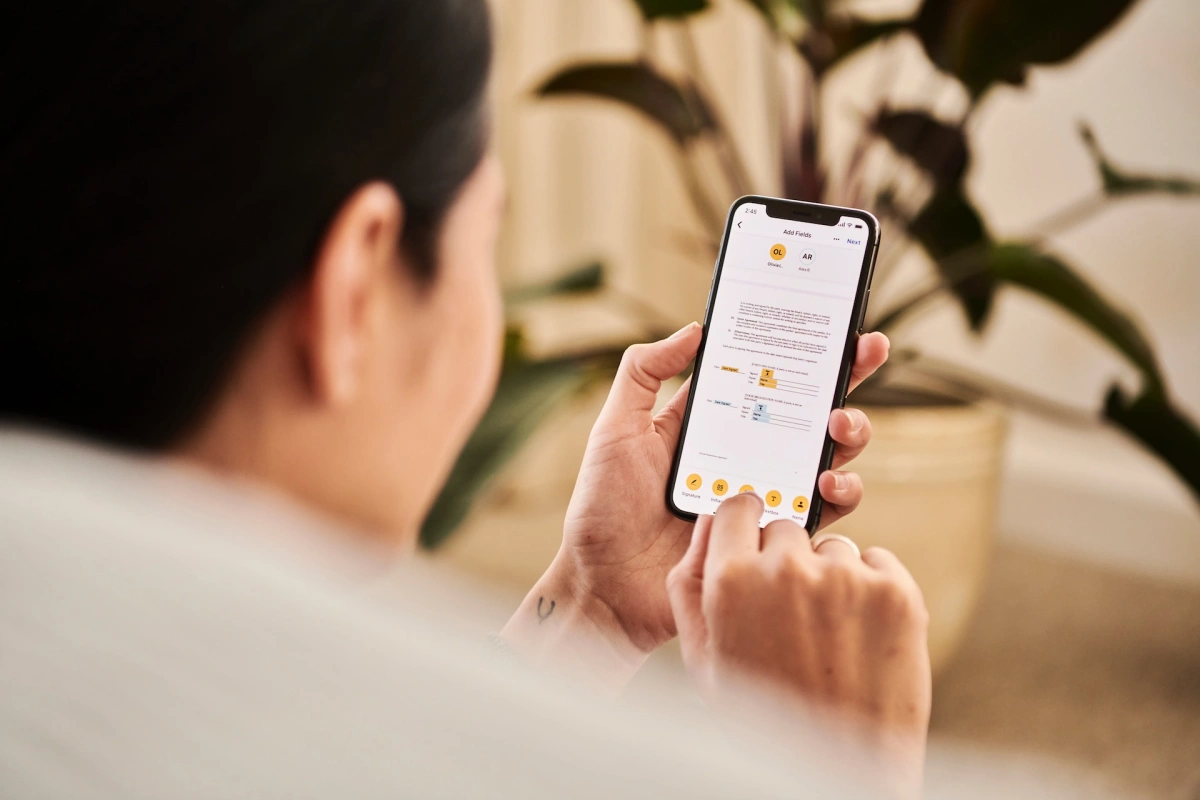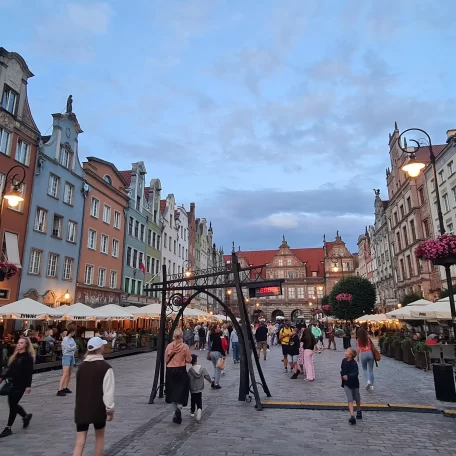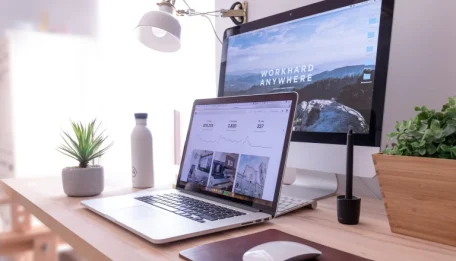5 Steps of Mobile App Translation for the Polish Market

The average Polish smartphone user has ten applications installed on their phone. Users go shopping with them, and apps motivate them while they jog and adjust the temperature in their bedroom. When launching an application on the Polish market and introducing it into the clients’ lives, you should support them in their native language. Why? Because it pays off.
Nowadays, many people make daily decisions using mobile devices like smartphones and tablets. To succeed abroad, a mobile app’s user interface must be in the target audience's native language. However, it's crucial to use the right language. The wording should be intuitive, relevant, and accurate.
However, translating an app goes beyond mere linguistic changes. It encompasses adapting to cultural nuances and technical requirements of the target market. This process, known as localization, includes adjusting the app’s UI, design, and even technological stack to ensure the product resonates with the local audience without losing its essence.
How Many Polish People Speak English?
Did you know that, in 2020, Android users downloaded 108.5 billion mobile applications? Every third person uses them in Poland, and, according to indications, these numbers will grow.
English is the leading language among mobile applications, and many Polish people speak it well enough to use an application without facing any problems. Meanwhile, research by the Polish Central Statistical Office shows that only 30% of Polish people know English on a communicative level. On the other hand, the Office for Electronic Communications reports that “most Internet users have mobile access to it on their phones (91.2%)”.
Conclusions? Almost every person in Poland aged 15+ has a phone, but only one in three speaks English well. When you plan to enter the market, you should make sure you have good mobile app translation in Polish to gain the customers’ favor and increase sales.
When analyzing the statistics, bear in mind Polish expatriates. According to estimations, as many as 4.5 million Poles live abroad, which also creates a large group of mobile application users.
Unsaturated Polish Mobile Application Market
Global brand applications are often translated into Polish, yet significant room remains for improvement. Take, for example, Strava — a widely used sports app in Poland, particularly beloved by cycling and running enthusiasts. In 2020, Poles logged over 3.3 million kilometers on the app, yet this distance was measured and reported in English. The app's press office has not disclosed the number of Polish users, nor is there information about plans to translate the app into Polish. Currently, Strava is available in 12 languages, including Portuguese and Dutch.
Many large companies opt for machine translation for their apps, products, and services, often resulting in nonsensical outputs. For instance, mistranslations like "Krawaty do włosów" (intended to mean "hair ties," but translating to "men's ties for hair" in Polish) and "karma dla studentów" (supposedly "student food," but "karma" translates to pet food in Polish) are glaring errors made by an e-commerce giant. While automated translations can occasionally be amusing, they are more likely to mislead users—especially in user manuals—or turn them away with awkward phrasing.
Localizing translations can help avoid such blunders. When planning a foreign-language version of your mobile app, engage an experienced translator who can provide not only linguistically accurate translations but also adapt the app to the cultural nuances and specific market characteristics of the target country. This approach ensures that the app resonates well with its intended audience.
Mobile App Localization Influences Purchasing Decisions in Poland
Mobile apps are no longer just entertainment, social networking sites, and games. They move into our everyday lives more and more often – controlling an air conditioner and even a washing machine from your smartphone is now possible. Manufacturers of audio and video devices and household appliances equip their products with applications that offer incredible possibilities.
However, most of them remain beyond the users’ reach as even the most user-friendly interface won’t replace the users’ native language. In general, application users are forced to use a foreign language, use only some features, usually the essential functions (often ON and OFF only), and do not benefit from the full functionalities of devices or programs.
Whether a mobile application is translated now has a decisive impact on purchasing a vacuum cleaner, oven, or TV set. We are more likely to shop in our native language than in a foreign language, and the same applies to service subscriptions. The app’s language version directly impacts sales, builds trust in the brand, and makes it more possible to succeed globally.
A Distimo study revealed that translating your mobile apps could increase app downloads by 128% and paid subscriptions by 26%. Failing to localize your app for foreign languages means potentially missing out on substantial user engagement and revenue increases.
App Translation Process for Your iOS and Android
Translating your mobile app can be a key to new market opportunities. If you're new to this process, it can seem daunting, but following best practices ensures great results.
Step 1: Start Early in Development
It's crucial to develop a localization strategy that targets your market effectively right from the start. Working with a translator specialized in mobile apps ensures your content is culturally relevant. They'll help shape the project to meet your business objectives and suggest the best ways to adapt your text to the local culture. This early integration of localization minimizes the need for major changes later, making the process smoother. Platforms like Android, iOS, and Windows provide localization guides. Follow these to meet specific requirements.
Make sure to allocate enough space for text expansion. Given that translations may extend a single word into several in multiple languages, it is particularly crucial for mobile apps to consider this, as screen space is often limited.
Step 2: Isolate Translatable Content
A critical step in the localization process is identifying all localizable content. Creating a comprehensive list that includes text strings, images, date and time formats, and other user interface elements ensures that no aspect of the app is overlooked during localization. This approach helps in maintaining a seamless and culturally relevant user experience.
Mobile app localization encompasses not only translating textual content but also adapting a wide array of app elements to suit different cultural contexts. This includes the user interface, date and time formats, currencies, units of measurement, and cultural references and expressions. Additionally, images, graphics, and voiceovers need to be localized to align with the expectations of the target audience. It's also important to adjust legal disclaimers, privacy policies, and other regulatory texts to meet the specific laws and regulations of each target location.
To effectively manage this complex process, developers should engage a Language Services Provider (LSP) experienced in mobile app translation and localization. An LSP can help bridge the linguistic and cultural gaps, ensuring the app appeals to its new audience. They facilitate the translation by extracting translatable strings into resource files, allowing seamless integration without altering the code.
Step 3: Opt for Humand Translation and Localization
Choose a language partner experienced in mobile app translation who can guide you through translation, technology, and cultural nuances. They should facilitate communication with translators and arrange for native testing of the localized app.
Effective translation involves more than just converting text. It requires cultural sensitivity and accuracy. Ensure your translator understands the app's context by providing them with a demo and clear interface instructions. Creating a localization-friendly app saves both time and money.
Avoid using machine translations as they often miss the context. Instead, provide your translation partner with string files and comments for precise translations. Professional translators use translation memories to prevent retranslating the same content, reducing costs and maintaining consistency across platforms.
For continuous updates, consider platforms like Phrase, Transifex, or Crowdin, which facilitate faster market entry but may vary in reliability compared to traditional CAT tools.
Step 4: Rigorous Quality Assurance and Testing
Once the app has been translated, the content must be proofread thoroughly to ensure quality. Accurate and contextual translation will provide a better user experience, resulting in the continued use of the app in a new market. This requires checking specific grammatical differences to ensure the translated language reads logically.
Testing your app is another essential stage for a mobile app translation. Testing the translation in real app conditions lets to verify that the translation is accurate and the app functions as intended. This is a key part of your app’s user experience, ensuring it will be used as designed.
Additionally, it's important to perform extensive testing across various language settings and devices of different screen sizes and resolutions to identify and fix any layout issues, text truncation, or visual glitches, ensuring a consistent user experience across all devices.
Step 5: Update and Maintenance
Moreover, the success of a localized app doesn’t end with its initial release. Regular updates and maintenance are crucial to keep the app relevant and functioning efficiently. Future updates must include precise translations for any new textual content, ensuring that the app continues to meet the evolving needs of its users and maintains high-quality standards across all supported languages. This ongoing process of updating and refining the app ensures that it remains competitive and resonates well with users, regardless of location.
Choose Game-Changing Mobile App Translation Services
Developing a mobile app for a global audience involves significant challenges, particularly in the translation and localization process. Translating app content requires not only linguistic accuracy but also cultural relevance to ensure the user experience is tailored appropriately for different languages and cultures.
To create a successful app, it's crucial to develop an engaging user interface and content that resonates across cultural boundaries. Relying on machine translations, such as Google Translate, can lead to inaccuracies and cultural missteps, potentially costing you reputation and money. Therefore, it's essential to choose a professional translation company with an effective workflow for localizing your app.
Working with professional mobile app translators can dramatically change your app's reach and reception. The experts offer insights and strategies to navigate localization challenges effectively, ensuring your app connects well with your target audience. By leveraging their expertise, you can enhance your app's appeal in foreign markets, increasing downloads and expanding your user base globally.
Langbay is a boutique translation company offering Polish translation services and specializing in mobile app translation. We maintain the integrity of your original content and ensure the translated text is culturally appropriate. Essentially, we assist in localizing your app to make it attractive to Polish audiences.
summary
To achieve success with your app in Poland, it’s essential to develop a user experience that is both engaging and universally appealing. This involves crafting content that is not only precise but also culturally suitable. Moreover, the user interface of your app should be user-friendly and easy to navigate. As such, relying on machine translation is not a good idea if you think seriously about expanding into Poland.
Let's Localize Your App for Polish Users
Let’s localize your app for the Polish market. You won’t get just a mere translated text from us. We’ll make sure your app really clicks with the Polish users.

Blog
Knowledge Base
Exclusive Bonus Just for You
Get Your Free eBook







